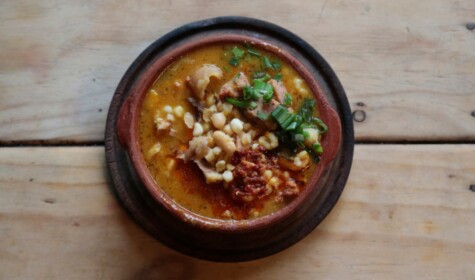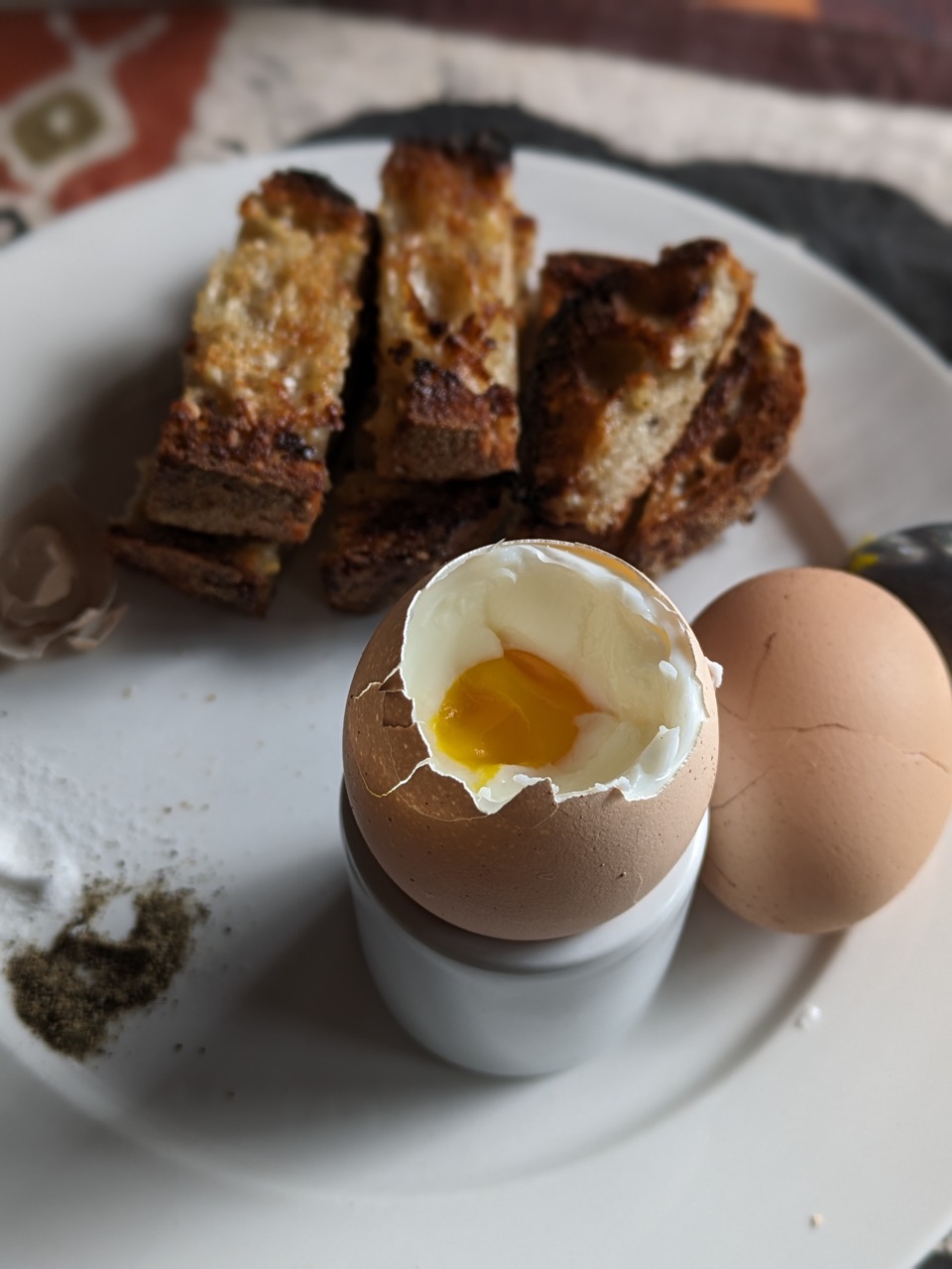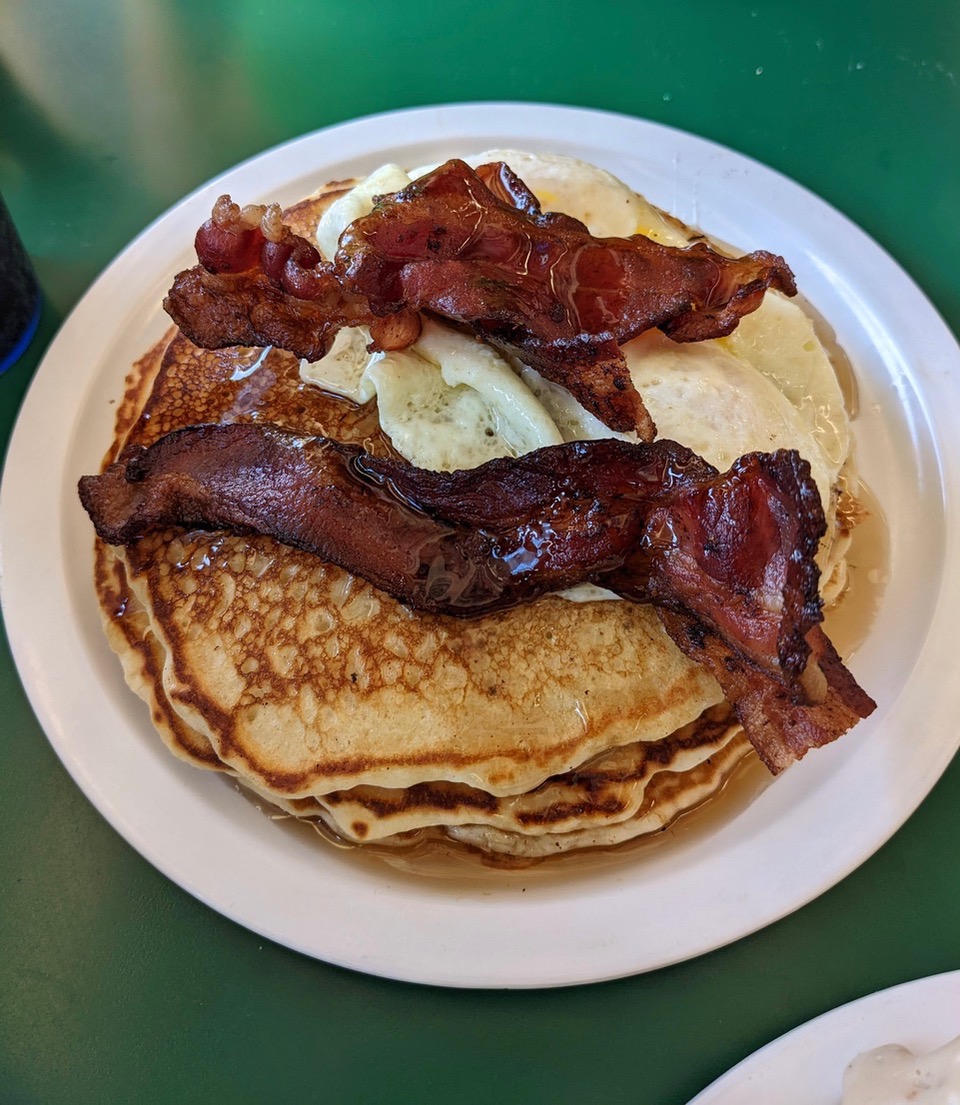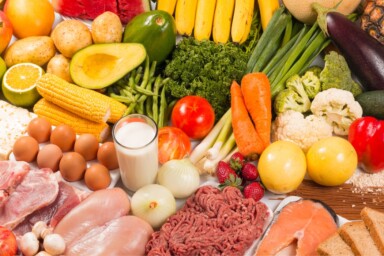Three takeaways (although I only ate one this week)
- Convenience vs conscience
I am fortunate enough to be able to buy my veg from Riverford, in the form of a fortnightly organic veg box delivered to the door. Through my work, I am also in touch with several organic livestock farmers close to Bristol and try to buy my meat directly from them. The rest of my food comes from a local independent shop and occasionally one of the major supermarkets.
When travelling and on the move, I often opt for the least bad fast-food option on offer – normally a takeaway sandwich – and on average, I probably consume one takeaway meal (often a vegetable curry) each fortnight. For lunches, I try to eat leftovers from the night before, however, occasionally (if there were no leftovers) I opt for ready-made soups, which often contain shockingly high levels of sugar and salt. Rarely do I have time to prepare food in the morning, and for this same reason, I quite often skip a proper breakfast, opting for a big mug of coffee and slice of toast at the office instead.
- Enjoyment vs ethics
When eating at a restaurant, especially if sharing food is an option, I’m less fussy and quite happy to eat in line with what others choose. At times, this means turning a blind eye to the more-than-likely industrially produced chicken or pork.
Clearly, I should be eating more fresh fruit, and at this time of year it should still be possible to find autumn grown apples and pears, however, after several soft and furry fruit experiences, I can’t say I relish the thought of an apple-a-day. Perhaps an alternative would be to consume frozen soft fruit or fruits preserved in other ways as an addition to breakfast cereals or as a dessert.
It’s also perhaps worth remembering at this point, the conclusion from Feeding Britain, that if we were to eat the recommended five portions of fruit and veg a day, we would still need to import some produce to meet the demand, even with a doubling of UK production. While this could be viewed as a tension between health recommendations and diet sustainability, it is absolutely possible to import foods in a sustainable way – in fact, due to the UK’s high population density and relatively constrained cropland area, trade will continue to play an important role in feeding the UK moving forwards.
- Transparency vs UPFs
A major challenge in trying to eat sustainably is knowing what’s really in your food, and where it comes from. This is, of course, an issue with ultra-processed foods which often comprise a multitude of ingredients, often with lots of salt, sugar, fat and additives. Complex food labelling also adds to the confusion. For instance, when it comes to pork products, you almost need to go to the shops armed with a handbook on the difference between ‘organic’, ‘free-range’ and ‘outdoor bred’.
Deciphering restaurant menus is another issue. ‘Grass-fed beef’ for instance doesn’t necessarily mean 100% grass-fed, and I’m always sceptical of the use of ‘local’ on the menu.
Conclusion
Unless you are a farmer or grower who is able to be relatively self-sufficient in staple foods, it seems to me that eating sustainably often requires compromise – sometimes because of price, but often due to availability, social setting or time constraints.
Whether or not the Feeding Britain ‘diet’ should be read as the gold standard is another question, not least because it represents just one version of what a regeneratively farmed UK could produce. However, in undertaking this experiment, I have realised that knowing the real story behind your food is hard, and that’s speaking as someone who is invested in eating sustainably.
We shouldn’t underestimate how challenging it is to be a truly ‘conscious eater’ – in terms of time and effort, willpower and dedication. However, going forwards, I will try harder to decipher labels, and to ask questions in restaurants about food provenance. Ultimately, though, there is only so much I can do as an individual, so perhaps my most important action will be to support the organisations, food companies and political parties working to accelerate the transition to a truly sustainable food system.
Featured image available here under a Creative Commons license. All other photographs taken by Bonnie Welch.
What is healthy, sustainable food? For more information on the Sustainable Food Trust’s vision of how we can eat more sustainably, check out our report, Feeding Britain from the Ground Up.










